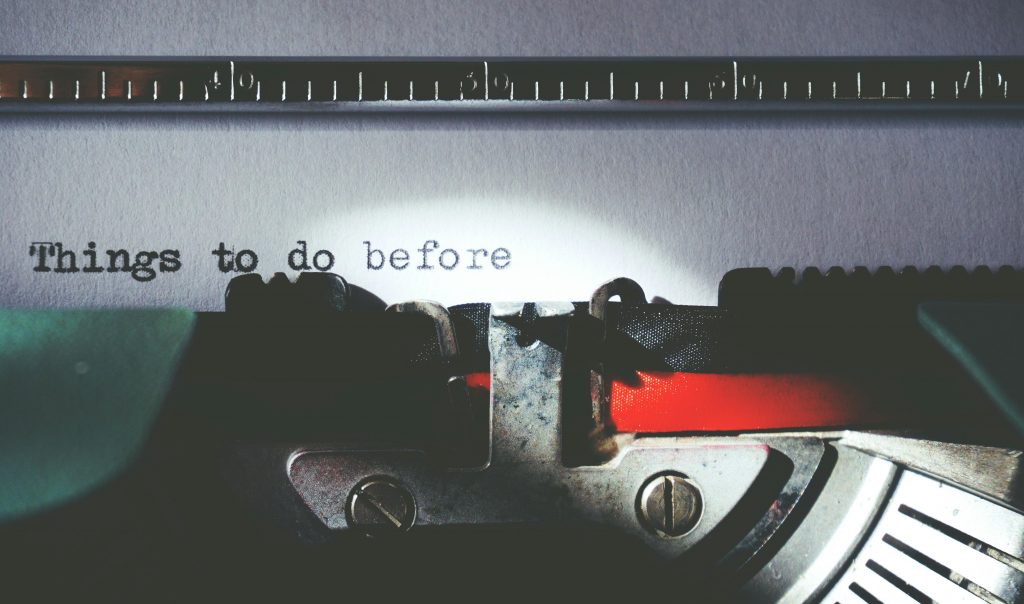Breaking Free: How do you get out of a toxic relationship
In a toxic relationship, the chains can feel suffocating.
The emotional manipulation, the constant criticism, the feeling of being held hostage by someone who claims to love you – it’s a deeply painful and destructive experience.
But breaking free is possible, and it’s the first step toward reclaiming your happiness and regaining control of your life.
In this article, we explore the journey of escaping a toxic relationship, providing insights, guidance, and support every step of the way.
From recognizing the signs of toxicity to building the strength to leave, we delve into the complexities and emotions that accompany this process.
We’ll discuss the importance of setting boundaries, seeking professional help, and surrounding yourself with a supportive network.
We’ll also offer practical advice on healing and rebuilding your self-esteem after the scars of a toxic relationship.
If you’re feeling trapped in a toxic relationship or know someone who is, this article will serve as a guiding light, reminding you that you are not alone and that there is hope for a brighter future.
It’s time to break free from the chains and embrace a life filled with love, respect, and true happiness.

Understanding toxic relationships
Toxic relationships are characterized by a pattern of unhealthy behaviors, emotional manipulation, and an imbalance of power.
It can be challenging to recognize the toxicity when you’re in the midst of it, as the manipulative tactics used by the toxic partner can often cloud your judgment and self-perception.
One of the key aspects of a toxic relationship is the presence of consistent negative emotions. You may find yourself constantly feeling anxious, fearful, or on edge around your partner.
The toxic partner may belittle you, criticize your every move, or use guilt as a way to control your actions.
These behaviors can gradually erode your self-esteem and leave you feeling trapped and powerless.
Another common characteristic of toxic relationships is the lack of respect and empathy. The toxic partner may disregard your needs, dismiss your feelings, and consistently put their own interests above yours.
This lack of mutual respect and understanding can create a toxic dynamic where your emotions and well-being are consistently undermined.
It’s important to remember that toxic relationships can happen to anyone, regardless of age, gender, or background. Recognizing the signs and acknowledging the toxicity is the first step toward breaking free from the chains and reclaiming your life.
Recognizing the signs of a toxic relationship
Identifying toxic behaviors and recognizing their impact on your well-being is crucial for your journey toward freedom.
While every relationship may have its ups and downs, a toxic relationship is characterized by consistent patterns of harmful behavior.
Here are some common signs to look out for:
- Constant criticism and belittling: In a toxic relationship, your partner may constantly criticize your appearance, intelligence, or abilities. They may make hurtful comments or use sarcasm as a means of demeaning you.
- Controlling behavior: Toxic partners often exert control over your life, making decisions for you, isolating you from friends and family, and monitoring your every move. They may become jealous or possessive, leading to a loss of personal freedom.
- Emotional manipulation: Toxic partners are skilled at manipulating your emotions to get what they want. They may use guilt, threats, or emotional blackmail to control your actions and keep you under their influence.
- Lack of respect and empathy: In a healthy relationship, both partners respect and support each other. In a toxic relationship, the toxic partner consistently disregards your feelings, dismisses your opinions, and fails to show empathy or understanding.
- Physical or verbal abuse: While not all toxic relationships involve physical abuse, it is important to recognize that physical violence or threats are never acceptable. Verbal abuse, such as name-calling or yelling, can also be a sign of toxicity.
- Gaslighting: Gaslighting is a manipulative tactic used by toxic partners to make you question your sanity or perception of reality. They may deny events or conversations, make you doubt your memory, or blame you for their abusive behavior.
Recognizing these signs is the first step toward breaking free from a toxic relationship.
Trust your instincts and seek support from trusted friends, family, or professionals who can provide guidance and help you navigate the complexities of leaving a toxic partner.

The impact of toxic relationships on mental health
Toxic relationships can have a profound impact on your mental health and emotional well-being. The constant criticism, manipulation, and abuse can lead to feelings of anxiety, depression, and low self-esteem.
It’s crucial to recognize the toll that a toxic relationship takes on your mental health and take steps to prioritize your well-being.
One of the most damaging effects of toxic relationships is the erosion of self-esteem.
Constant criticism and belittling from a toxic partner can chip away at your self-worth, leaving you feeling unworthy and powerless.
This can have long-lasting effects on your confidence, making it difficult to trust your own judgment and make decisions for yourself.
Toxic relationships can also lead to increased levels of stress and anxiety.
Living in a constant state of fear, walking on eggshells, and anticipating the next outburst or criticism can take a significant toll on your mental health.
Over time, this chronic stress can lead to physical health problems, such as headaches, digestive issues, and sleep disturbances.
Additionally, toxic relationships can contribute to the development or exacerbation of mental health conditions such as depression and anxiety disorders.
The emotional abuse and manipulation can leave you feeling isolated, hopeless, and trapped, making it difficult to seek help or escape the toxic cycle.
It’s essential to prioritize self-care and seek support from trusted individuals or professionals who can help you navigate the emotional impact of a toxic relationship.
Remember, you are not alone, and there is hope for a brighter future.
Steps to breaking free from a toxic relationship
Breaking free from a toxic relationship is a courageous and empowering step toward reclaiming your happiness and regaining control of your life.
While the process may be challenging and emotionally draining, it is possible to break free from the chains of toxicity.
Here are some steps to guide you on your journey:
- Recognize and acknowledge the toxicity: The first step in breaking free is to recognize and acknowledge the toxic nature of your relationship. This may involve seeking validation from trusted friends or professionals who can help you see the situation objectively.
- Create a safety plan: If you’re in immediate danger or fear for your safety, it’s essential to create a safety plan before leaving. This may involve finding a safe place to stay, informing trusted individuals about your situation, and having important documents and belongings readily accessible.
- Reach out for support: Breaking free from a toxic relationship is not something you have to do alone. Reach out to friends, family, or support groups who can provide emotional support, guidance, and resources. Don’t hesitate to seek professional help from therapists or counselors experienced in dealing with toxic relationships.
- Set boundaries: Establishing and enforcing boundaries is crucial for your well-being and for maintaining your independence. Clearly communicate your boundaries to your toxic partner and be firm in upholding them. It may be helpful to seek support from a therapist or counselor to navigate this process effectively.
- Plan your exit strategy: Leaving a toxic relationship requires careful planning, especially if you anticipate resistance or retaliation from your toxic partner. Make a plan for leaving, including finding a safe place to stay, securing your finances, and gathering important documents.
- Cut off contact: Once you’ve made the decision to leave, it’s important to cut off contact with your toxic partner. Change your phone number, block them on social media, and avoid places where you’re likely to run into them. This will help create a sense of safety and allow you to focus on your healing and recovery.
Remember, breaking free from a toxic relationship takes time and courage. Be patient with yourself and celebrate each step forward, no matter how small.
You deserve to be free from toxicity and to live a life filled with love, respect, and true happiness.
Building a support system during the healing process
After leaving a toxic relationship, building a strong support system is crucial for your healing and recovery.
Surrounding yourself with trusted individuals who offer support, understanding, and encouragement can help you navigate the emotional challenges that may arise.
- Reach out to friends and family: Lean on trusted friends and family members who can provide emotional support and understanding. Share your experience with them and allow them to be there for you as you heal.
- Join support groups: Connecting with others who have experienced similar situations can be incredibly empowering and validating. Look for local or online support groups where you can share your story, gain insights, and receive support from individuals who truly understand what you’ve been through.
- Consider therapy or counseling: Seeking professional help from therapists or counselors experienced in dealing with toxic relationships can be immensely beneficial. They can provide guidance, tools, and techniques to help you heal from the trauma and establish healthy coping mechanisms.
- Engage in self-care activities: Prioritize self-care activities that bring you joy and help you reconnect with yourself. This may include engaging in hobbies, practicing mindfulness or meditation, exercising, or seeking relaxation through activities such as yoga or journaling.
Building a support system not only helps you during the healing process but also provides a network of individuals who can continue to support you in your journey toward a healthier and happier future.
Practicing self-care and self-love after leaving a toxic relationship
Leaving a toxic relationship is a significant step toward reclaiming your happiness, but the healing journey doesn’t end there.
Practicing self-care and self-love is essential for rebuilding your self-esteem, regaining your confidence, and embracing a life filled with love and happiness.
- Prioritize your physical well-being: Take care of your physical health by getting enough sleep, eating nutritious meals, and engaging in regular exercise. Physical self-care contributes to emotional well-being and helps you regain strength and vitality.
- Practice self-compassion: Be kind and gentle with yourself as you navigate the healing process. Acknowledge that you have been through a challenging experience and give yourself permission to heal at your own pace. Practice self-compassion by speaking to yourself with kindness, practicing forgiveness, and nurturing yourself emotionally.
- Engage in activities that bring you joy: Rediscover activities or hobbies that bring you joy and make you feel alive. Engaging in activities you love can help you reconnect with your authentic self and remind you of your worth and individuality.
- Surround yourself with positive influences: Surround yourself with positive people who uplift and support you. Minimize contact with individuals who bring negativity into your life and focus on nurturing relationships that promote your growth and well-being.
- Set goals and celebrate milestones: Set achievable goals for yourself and celebrate each milestone along the way. Recognize your progress and celebrate your achievements, no matter how small they may seem.
Remember, healing takes time, and it’s a unique journey for everyone.
Be patient with yourself, practice self-compassion, and embrace the process of rediscovering your worth and embracing a life filled with love, respect, and happiness.
Seeking professional help and therapy
Seeking professional help and therapy is an essential aspect of healing from the wounds of a toxic relationship.
Therapists and counselors with experience in working with individuals who have experienced toxic relationships can provide valuable guidance, support, and tools to facilitate your healing journey.
- Individual therapy: Individual therapy provides a safe and confidential space for you to explore your emotions, heal from the trauma, and develop healthy coping strategies. A therapist can help you navigate the complexities of your past relationship, address any underlying issues, and work toward establishing a healthier and happier future.
- Group therapy: Group therapy offers the opportunity to connect with others who have experienced similar situations. Sharing your story, gaining insights from others, and receiving support from individuals who truly understand can be immensely empowering and validating.
- Trauma-focused therapy: Trauma-focused therapies, such as Eye Movement Desensitization and Reprocessing (EMDR), can be particularly helpful for individuals who have experienced severe emotional or physical abuse. These therapies aim to process and heal from the trauma, allowing you to move forward with your life.
- Couples therapy (if applicable): If both partners are willing, couples therapy can be an option to address and work through the toxic dynamics within the relationship. However, it’s important to note that couples therapy is not always appropriate or effective in cases of severe abuse or when the toxic partner is unwilling to change.
Seeking professional help is a courageous step toward healing and rebuilding your life after a toxic relationship.
Remember to find a therapist or counselor who specializes in trauma or toxic relationships to ensure you receive the support and guidance you need.
Rebuilding trust and establishing healthy boundaries
After leaving a toxic relationship, rebuilding trust in yourself and others can be a challenging process.
The emotional manipulation and betrayal experienced in a toxic relationship can leave lasting scars, but with time and effort, trust can be rebuilt.
- Start with self-trust: Rebuilding trust begins with trusting yourself. Reflect on your strengths, resilience, and the courage it took to leave the toxic relationship. Acknowledge that you made the best decision for yourself, and trust that you have the ability to navigate your future with wisdom and resilience.
- Set healthy boundaries: Establishing and enforcing healthy boundaries is crucial for maintaining your emotional well-being and protecting yourself from future toxic relationships. Clearly communicate your boundaries to others and be firm in upholding them. Remember that setting boundaries is an act of self-care and self-respect.
- Take small steps in building trust with others: Rebuilding trust with others may take time, but it’s important to remember that not everyone is like your toxic partner. Take small steps in building trust with others, starting with individuals who have proven themselves trustworthy and supportive. Gradually open yourself up to new relationships and allow yourself to be vulnerable when it feels safe to do so.
- Practice forgiveness: Forgiving your toxic partner may not be necessary for your healing, but practicing forgiveness for yourself can be empowering. Release any anger or resentment you may hold toward your toxic partner and focus on your own growth and well-being. Forgiveness is a process, and it may take time to fully let go of the pain, but it is a step toward reclaiming your power and moving forward.
Rebuilding trust and establishing healthy boundaries is a gradual process, and it’s essential to be patient and compassionate with yourself. Surround yourself with individuals who respect your boundaries.
Overcoming Guilt and Shame
The scars of a toxic relationship extend beyond the visible wounds, often leaving individuals grappling with overwhelming feelings of guilt and shame.
It’s common to question one’s own actions and blame oneself for the toxicity of the relationship.
However, it’s essential to recognize that the responsibility for the toxicity lies solely with the toxic partner, not with the victim.
Practicing self-compassion is crucial in combatting these debilitating emotions. Start by acknowledging that you deserve kindness and understanding, just as much as anyone else.
Challenge the negative self-talk by replacing it with affirmations of self-worth and resilience.
Remember, healing from a toxic relationship is a journey, and it’s okay to seek support from trusted individuals or professionals to navigate through the layers of guilt and shame toward a path of self-forgiveness and empowerment.
Conclusion: Embracing Freedom and Healing
Breaking free from the chains of a toxic relationship is a courageous journey toward reclaiming one’s happiness and autonomy.
Throughout this article, we’ve explored the complexities of toxic relationships, from recognizing the signs of toxicity to taking decisive steps toward liberation.
We’ve delved into the emotional impact of toxic relationships on mental health, emphasizing the importance of self-care, self-love, and seeking professional help.
As you navigate the path to healing, remember that you are not alone.
There is a supportive network ready to uplift and empower you on your journey. By setting boundaries, prioritizing self-care, and rebuilding trust, you can emerge from the shadows of toxicity into a life filled with love, respect, and true happiness.
Let this be a reminder that your strength and resilience are unwavering, and the future holds endless possibilities for growth and fulfillment.
Embrace the freedom to live authentically and embrace a brighter tomorrow, knowing that you are deserving of all the love and joy the world has to offer.









